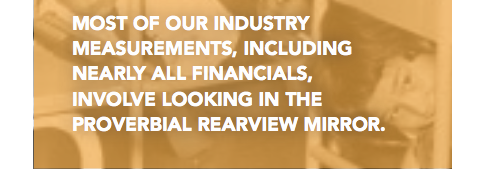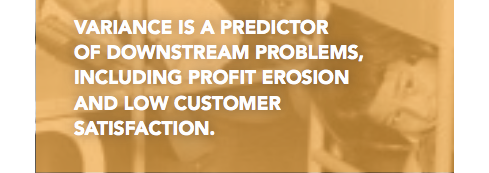Ask anyone over 60 what the “DEW Line” is and chances are they’ll know—although I doubt many people younger than 50 have even heard of it. Back when I was a kid during the Cold War, we regularly practiced nuclear attack drills by crawling under our desks, tucking our heads, and covering up. We all knew the meaning of the DEW Line.
The “Distant Early Warning” Line was a North American communications network that provided early detection if the Soviets launched a nuclear missile at the U.S. More than 60 manned radar installations were built, mostly situated in lonely outposts in places such as Greenland, the Canadian Arctic, and Alaska. Of course, developments in weapons technology and the use of satellites with advanced GPS has rendered the old DEW Line largely obsolete. We can track threats from outer space, and besides, the greatest Russian threats now arrive via Facebook and Twitter.
My brief historical review is to emphasize that the entire DEW Line system was set up to do one thing: provide us with an early warning of the problems coming our way. Waiting until the bombs began exploding over Toledo, Kansas City, and Fresno would provide far more accurate actual reporting, of course, but it wouldn’t be much help in saving lives.
Predicting Threats
This summons the same question regarding home building today. Hardly a day goes by without some author or pundit predicting dire straits for our industry in terms of margin erosion, despite the essentially strong economy.
Will there be another recession? Of course there will. But are we talking two years out or 10? Will the trade shortage persist? Will material costs continue to rise? Cost of land? Entitlements? And are we really facing a crisis of affordability across virtually all market segments?
Even our clients whose companies are healthy and growing pay attention to this news, wondering what to make of it. So, what’s our version of the DEW Line? What mechanisms for “early warning” do we have in home building, not only for external, macro challenges to our businesses, but also for those in our local markets?
Then what about early warnings for internal threats? Staying on top of those is a large part of a manager’s job—or at least it should be. While your troops are out designing and selling the product, supervising construction, performing warranty work, or writing monthly accounting reports, higher-level managers must be eternally vigilant about the rise of anything that threatens performance—the earlier in the process the better. But, from my observation, it’s rare for managers to think this way.

Freakonomics
While considering this, I heard something on the “Freakonomics” podcast series—named after the best-selling book with the same title, which I also highly recommend. The podcast gave a new slant to my pondering of early warning signs.
The host described a large mental health center that conducted a decade-long research project on the return rate of psychiatric patients who had been previously admitted and released. It tracked the predictive accuracy of the highly pedigreed doctors. The study also measured the predictive accuracy of staff nurses. Researchers were surprised to find one nurse showed significantly better return-rate predictions than the doctors. Stop and think about that for a minute. Why was this nurse more accurate compared with the docs?
To me, it was clearly a case where the nurses were just much more in touch and in tune with the patients’ psychological problems and had a better sense of whether someone was being released at the right time—or not. Simple, right? Obvious! During a couple of hospital stays for surgery, I learned firsthand the remarkable abilities of the nurses at the University of Michigan Medical Center. Nurses often understand the subtleties better than more highly educated and pedigreed doctors. That’s the obvious answer.
Or is it? It turns out I was wrong, and I’ll bet most of you were, too. What metrics did the top nurse in the 10-year study use to predict the recidivism of patients? Give yourself a nice drumroll on your desk; now hear this … it was the weight of the patients’ files! The heavier the file, the more likelihood of a return. Duh! There is face-logic to this. A fat file indicates a lot going on with that patient. Lots of sessions, lots of tests. The skinny files were the relatively simple, easy cases, for the folks who recovered. Remember though, the higher-paid experts with “Dr.” in front of their names had those files right in front of them as well. All of their education and expertise could not do better than the simple, obvious factor of file weight, which a volunteer “candy-striper” could perform.
One commentator on the program suggested that since everything is online now, nurses could no longer use weight as a measure. Another quickly retorted that it would in truth be easier now. Just record each patient’s digital file size in megabytes into a spreadsheet. Click. Sort. Done. Another big “duh!” and you don’t even have to weigh the files. Now, would the hospital, government agencies, and insurance companies ever accept the substitution of file size for professional expertise? Never. But I’ll bet they continue to track it, internally.
Spudonomics
I’m one of the rare people who admits to having enjoyed college economics courses, and even now each year I read a book or two on the subject. Economics is nothing more than a focused study of humans interacting with money or commodities across broad populations, segmented in myriad ways. Stories of surprising measures in economics are legion; one of the most memorable is the Irish Potato Famine in the mid-1800s that resulted in about a million deaths out of the 8 million population and another 1.5 million emigrating to the U.S.
An economics professor will often ask students what happened to the per capita consumption of potatoes in Ireland as the blight spread across the country, steadily destroying potato crops, the primary staple of Irish agriculture. The knee-jerk answer is, of course, that if the crops were being wiped out, then consumption of potatoes had to drop commensurately. It turns out the exact opposite was true. Potato consumption increased so dramatically that scurvy and other diseases driven by poor nutrition exponentially increased.
How to explain this? Potatoes were the major export commodity of Ireland. With the potato blight in full bloom, a large measure of the crop failed, and what did survive couldn’t be exported for sale. No potato sales meant no money to buy any other foodstuffs. So the Irish ate potatoes and nothing but potatoes. Massive malnutrition, sickness, death, and mass-emigration ensued. The millions who died or left Ireland were the very measurable end-result. The first inkling of potato blight a decade prior was the early warning sign, but times were good. Everyone missed it. You can draw exact parallels to the housing crash of 10 years ago.
Lesson of the Water Cooler
Prior to my life in home building, I worked on a big consulting project with an agricultural implement company in the Midwest. Its goal was a significant, positive culture change that would improve labor relations and reduce union unrest. We conducted individual interviews, focus groups, and surveys. Several teams were created to work on specific issues coming out of the study.
During a meeting with the communications team, one goal shared by labor and management was to have some early warning system for problems before they became serious enough to affect production. Several mechanisms were proposed and discussed. One team member mentioned that from his work station, he had a direct line of sight to the drinking fountain located across from the most powerful union representative in the plant. He swore that whenever traffic increased around that drinking fountain, a significant labor issue surfaced within a week. We had a good laugh about that and moved on.
Meanwhile, unbeknownst to all but two members of the team, a meter was installed on that drinking fountain line, “just for fun.” The readings were recorded at the end of each day. A year later, the results of the secret study were revealed. There was a perfect correlation between drinking fountain flow rate and labor unrest. When workers became agitated, they found an excuse to stop by that water station, where they could get in a few quick words with the union rep. When I left the firm a few years later, they were still tracking that water meter and it wasn’t merely an indicator, it was a predictor—a simple measurement that beat the experts, hands down.

The HEW Line?
How do these examples apply to home building? Can we create our own HEW (Home-building Early Warning) Line? Most of our industry measurements, including nearly all financials, involve looking in the proverbial rearview mirror. Actions driven by such measurements, besides often being too late to help, frequently create “induced variation” in the system, making things worse, not better.
Now and then I get an email from a follower of Dr. W. Edwards Deming, the famous quality and management guru, and they’ll know exactly what I’m talking about by the term “induced variation.” Briefly, when you respond on the back-end, looking at numbers from the past, then force changes upon a system or process, you often induce significant swings in performance. The variation increases, and the typical response is to try even stronger corrections, causing even larger variation. The degradation in performance is the result of our direct actions, thus it is “induced.” The only solution is to back away, let the system settle out, and make well-planned adjustments upstream. We will never abandon these financial measures, but they are little help as an early warning.
What do we have that’s better in home building than our typical results measures of margins, percentages of various income statement categories, and balance sheets, which are always after-the-fact? Here are a few things I’ve seen from my 30-plus years working with more than 250 builders.
The first that comes to mind is site cleanliness. Sloppy, dirty, or unorganized lots or homes under construction are a strong indicator of management problems and weakness in builder/trade relationships. It’s never simply “the trades don’t care.” If that were so, we’d never find the examples of builders that do manage to have consistently clean and well-organized building sites. Measuring this is necessarily qualitative, but every builder should track it, rating homes and sites at least weekly. If you wait longer than that for correction, then trades arrive at homes that are a mess or deliveries are made to “lot disasters.” It’s irrational to believe one trade will clean up the mess of one or more previous trades. Things just go downhill from there.
Another measure that’s more quantitative, although it certainly lags and can be contaminated, is waste removed per site, either by tonnage or “pulls.” Right now, can you tell me what that figure is, by unit, by project? You need to chart waste continually, comparing it by product line, locations, trades, etc. Rarely do I find this done routinely or, if it is, to get the data in a form you can use to create a response. Sure, neighbors will dump stuff in your pens, carts, and dumpsters, but that averages out over time. Site waste tracking done right can become an early warning sign of both people and process problems upstream.
Last year I published a four-article series on variance purchase orders (VPOs) and it remains one of the least understood and most underused measurements (see below to request that article series). Variance is indeed an after-the-fact measurement as it’s primarily the outcome of upstream deficiencies in plans, specifications, bid packages, start packages, and other factors such as the quality and training of personnel, both in the office and in the field. Variance also is a predictor, however, of downstream problems including profit erosion and low customer satisfaction. And it can be measured monthly with considerable accuracy—if you know how to measure
it correctly.
Variance can certainly be manipulated by padding the quantities and pricing upstream, but I’ve generally found that the best builders have the lowest variance, and vice versa. Do you track variance both by number of instances and dollar value for each house, each community, and the whole company? If you don’t, you’ve lost another element of your early warning system for problems down the road. And, as you’ll read in the variance article series, if you don’t track the overhead falling on the builder, suppliers, and trades alike, you’re only tracking 10 percent to 20 percent of the true cost. I have yet to meet a single builder that measures and reports VPOs completely.
I’ve talked for years about continually tracking the state worker compensation factor for each of your trades. On one hand, yes, it lags behind actual performance. On the other hand, it’s a predictor of liability exposure. Should you care about it? Does your insurance company? Do your attorneys?
That’s all we can fit for this month, but I need a favor: Shoot me an email telling me about what you use as an early warning measure. What constitutes your own DEW Line—the indicators that give you a warning upstream for internal and/or external threats? And if they’re strange or counterintuitive, all the better. I’m more of a production and operations guy, but I’ve heard of some great ones coming out of sales, as well.
So let’s hear yours and in a subsequent column I’ll share some of the best, most intriguing measures that could give you sufficient time to react before the bombs drop in your office or on the jobsite.
For a link to a free PDF of “Grand Theft Home Building,” a collection of columns on practical ways to improve profit that includes the VPO series mentioned above, email your request to info@truen.com. Reach Scott at scott@truen.com or 248.446.1275.













